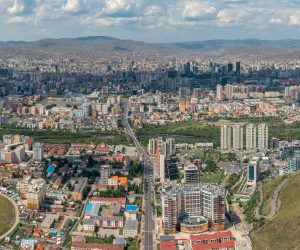Language
You can read the magazine in one of the following languages
Geolocation
You can read the global content or the content from your region


A 1.5 million-square-kilometer swathe of land that divides Russia to the north and China to the south, Mongolia is a mass of gnarled mountains and sweeping plateaus. It is also the site of a dramatic digital evolution thanks to strong penetration by 2G, 3G and even 5G networks, which has seen its banking industry completely transform at a startling rate.
Khan Bank is a case in point, with a new tech-fuelled persona that is a far cry from the bank’s humble beginnings as the Agriculture Bank of Mongolia in 1991, when it was jointly owned by agricultural cooperatives, herdsmen and farmers. In 2003, it was privatized and renamed Khan Bank, and over the past five years, around US$30 million per year has been plowed into enhancing its digital capabilities, taking it into a new age.


The numbers deftly paint a picture of progress. Just five years ago, Khan Bank was processing around 500 million transactions annually, 97 percent of which were via its digital channels. Last year, that number rose to around one billion transactions, with 99 percent through digital. This gives the bank a 75 percent share of the digital transactions taking place in Mongolia, cementing its position as the leading digital bank in the country.
Today, 100 years since Mongolia’s modern banking system was established, 85 percent of all ATM transactions taking place countrywide are processed by the Khan Bank, along with 45 percent of point of sale (POS) transactions.
Munkhtuya Rentsenbat had worn the First Deputy hat at Khan Bank for 13 years before she stepped up as CEO, and had been with the company for seven years before that too, so she knew the intricate details of the bank’s operations. But she wanted to dig deeper and uncover where the real opportunities for Khan Bank lay.
The bank was well-established in retail banking but she knew there was work to do on the digital front. “The Khan Bank business model is a very pure retail bank business model with our business being 70 to 80 percent related to the retail side,” she tells The CEO Magazine.
“We did some assessment around where Khan Bank is currently positioned on the IT digital side, and then we compared it to the other international banks to see where we are positioned and how we can improve that position.”
What became abundantly clear from the findings was that the bank needed to pursue “pure digital banking”, according to Rentsenbat.
She implemented her first midterm business strategy between 2021 and 2023, with it centering around digital transformation. It represented a ramping up of its existing IT strategy which had seen it invest heavily in the area over the five years prior.
“Between 2015 and 2020, we invested almost 60 to 70 percent of our total capital expenditure each year in IT improvement, including IT infrastructure and IT hardware,” Rentsenbat says.


“During the last three years we have been more focused on our IT strategy and how we develop new digital banking platforms and applications. At the same time, we have to train our employees and also our customers as well, because we need to educate them on how to use those mobile applications,” she says.
These capabilities took an entirely new resonance during the turmoil of the COVID-19 pandemic. When the pandemic broke out across Mongolia, digital banking became an essential service, particularly in the capital city of Ulaanbaatar where around half of the country’s population of 3.2 million live. There, residents went into lockdown five times for periods of two to three weeks.
Rural areas, where the remainder are distributed, were less impacted by the strict rules, enabling inhabitants of those areas to still use the bank’s regular in-branch services. But it nonetheless served as a call to action.
“During the last lockdown, we realized that there were a lot of opportunities for us to improve on the digital side,” Rentsenbat shares. “It was a very good lesson for us.”
Now, online services are the bank’s main channel, although it still has 91 branches in the capital city and 454 in province centers and rural areas.
The reason it is maintaining those branches, according to Rentsenbat, is because of the broad range of customers that bank with Khan Bank. “There are populations that can’t use digital channels like elderly people. We, as a bank, still need to serve them,” she says.
“At the same time, Khan Bank branches are an important hub where communities can meet and exchange information, and for local small and medium businesses with financial and non-financial services to help them run their businesses successfully.”
Right after Rentsenbat’s appointment as CEO, she enlisted Degi Erdenedelger to take on the First Deputy role she had just vacated.
As First Deputy, Erdenedelger oversees Khan Bank’s business clients including retail SMEs, corporate banking and financial banking areas while also helping to drive the digital transformation of the bank as well as investor relationship areas.
She helped craft the midterm business strategy, with the coinciding drama of the pandemic driving home the necessity of the digital shift.


“At that time, less than two percent of our lending was through digital channels and consumer lending. But now, after the three year strategy, 65 percent of consumer lending has successfully shifted to seamless automated lending operations, which was a very significant improvement,” she says.
It’s a transformation being driven by its youth, she explains, with 70 percent of the population under the age of 35. “They’re quite smart and savvy which has helped the retail banking sector to digitalize at such a high rate now,” she says.
The last six months of 2023 saw Erdenedelger turn her attention to the electronic Know Your Customer project thanks to this sudden and dramatic uptake of Khan’s online banking services.
“It’s no longer necessary for all these people to come to the bank to update their personal information and business information,” she explains. “Email address, phone number, address change – this kind of information they’re now able to change via our digital channels as well.”
With the next midterm strategy already mapped out for 2024 to 2026, sustainable development is moving to the fore as Khan Bank continues to advance on all fronts.
Like other Mongolian commercial banks, it has taken the lead from the country’s government in striving for ambitious goals – Mongolia aims to reduce greenhouse emissions by 22.7 percent by the end of 2030.
“Khan Bank already approved its sustainable development policy in 2020, and our operations and strategies are aligned with this policy and strategy,” Rentsenbat expands. “So when we updated our policy in 2023, we added a lot of the policies regarding climate change, gender equality and children and human rights and so on.
“Now, in line with our updated sustainable development policy, we are working to update our lending policy, accounting policy and HR policy as well as our customer experience strategy.”
As a leading bank and one of the largest private entities operating in the country, Khan Bank must stand at the forefront of sustainable advances, according to Rentsenbat.
“We have a responsibility to lead the other entities, other companies in terms of developing our green economy, in terms of developing sustainable financing and sustainable development policies,” she says. “And as a top lender in the banking sector, we are now focusing on educating our customers, educating our borrowers, how to utilize those sustainable finances and how to use those green loans in an effective manner.”
Khan Bank is firmly taking heed of a joint goal set out by Mongolian commercial banks to boost levels of green lending to 10 percent of their total loan portfolio by the end of 2030.
“As for Khan Bank, we are aiming to increase our green loan portfolio to 10 percent by the end of 2025,” Rentsenbat shares. “So in the past few years, we have worked with international financial institutions to raise funds for green loans and sustainable financing.
The bank’s green loan portfolio now makes up 47 percent of the total green loan portfolio in the banking sector.
“The problem we are facing now, not only Khan Bank but all Mongolian banks, is that we have to confirm or verify that those loans are actually green,” Rentsenbat adds.
That’s why Khan Bank devised a plan to establish a national green database, the result of discussions with the Central Bank of Mongolia and the Mongolian Sustainable Finance Association of which Rentsenbat is the Chair of the board of directors.


“Together with the banks, we are making a lot of actions toward our borrowers, toward our companies and corporates, to actually reflect the sustainable finance goals in our operations and in our business,” she says. “So in the past, we actually organized many trainings for our employees, our customers, around what is green loan? How does it work? What is green financing?
“We did a lot of those sessions. But it was difficult to make them understand without the actual results. So what we have done is we become a model. We transformed our office in Seoul Street in the capital city, which is the second big head office of our bank and we transformed it into a sustainable building.”
Made up of two parts, the Seoul Street office’s old section was built in 1980 during the socialist era, with an extension added in 2008. Last year, Khan Bank installed solar panels on the roof and replaced all glass facades with smart, innovative glass.
“Now, 22 percent of our electricity supply is coming from renewable energy,” Rentsenbat says. “We also introduced water management and recycling management processes in the building.”
The bank is also experimenting with similar innovations at its bank branches, with solar panels already added at a few of its rural branches. “Now, 100 percent of their electricity is coming from solar energy,” she says proudly. “In the upcoming years, we are planning to increase the number of branches that are powered by renewable energy.”
All these strides being made in terms of sustainability don’t mean that Khan Bank has lost its focus on the digital transition that is still underway.
“Of course we’ll continue our strategy on transforming our retail banking into digital platform based banking,” Rentsenbat says. “We’ll continue delivering our digital services to our sales customers and, at the same time, we’re going to focus on improving our control and risk management processes.”
Non-financial services will also play an important role. Erdenedelger shares that the bank has developed its own digital wallet which launched in June this year.
“This digital wallet is going to offer much more convenience,” she promises. “It will make the customer’s relationship with the bank, as well as with the SMEs and businesses, much more simple. It will really help to ease the ecommerce payment experience for the consumers as well.”


Such innovations are crucial amid a landscape where Khan Bank is not only competing with 11 other banks, but with retail consumer businesses too.
“We compete with fintechs and non-bank financial institutions. Even some mobile providers are providing products such as wallets and consumer lending,” Erdenedelger continues. “That’s why we will still continue to focus on digitalizing our business. And after our next three years strategy, by 2026, almost 100 percent of our consumer lending will be able to shift to fully digital channels as well.”
Machine learning and AI are essential tools to aid in this process, with customers leaving behind data with every action they take. This can be used to help Khan Bank personalize its offering more closely and start segmenting its customers.
“In the past, the customer segmentation was mostly based on the age or the customer education or gender or geographical areas,” Erdenedelger explains. “But now, our customer segmentation is based on machine learning.”
Khan Bank is also extending the impact of its digital push by investing in a digital training platform for its staff entitled Khan Bank Academy. “Even when you are on a maternity leave, or long-term leave, you’ll be able to still continue learning from this platform,” she says.
Almost 950 courses have been added to the internal training platform since its launch in 2019.
It’s a way of shifting the mindset of the people that power the bank, to ensure they are coming along on the digital journey. Digital savvy is also one of the six ‘employee success behaviors’ that have been set out as pillars of the bank’s culture as it increasingly adopts digital technology such as robotic process automation into its operations.
“Our people’s mindsets and the way in which we work has to also change from the traditional way to the agile management framework,” Erdenedelger says.
Its commitment to changing the mindsets of its employees, so crucial in any business transformation, is further demonstrated by the launch of its Cultural Ambassador Program, Rentsenbat adds. Each month, the program identifies a particular topic that the management team wishes to address ranging from green loans to digital transformation to ensure that each employee is completely qualified as a representative of the bank.
“Because it’s through those employees, that we train our customers,” she expands. “Our employees are like a teacher or a coach for our customers.”


While Khan Bank’s employees are a vital channel for connecting with customers, they are one of many, with the bank actively pursuing a multi-channel approach.
“Our customers can reach out to our banks, to any channels, to our automated chatbot, to our contact center and branches.”
Employees are critical in helping them to understand how to get information about products and services in the most efficient manner, how to protect their information and how to plan for the future.
“Khan Bank places very high importance and significance on its corporate culture, and that’s why we carry out those programs to our employees to enhance their professionalism and ethics,” Rentsenbat says.
“In many other international cases, digital transformation meant those companies had to lay off many employees. But in our case, we didn’t do that. What we have done instead is provide our employees with alternative options to work online; not in the branch but on a remote basis.
“There are 1,837 employees working in the head office and 250 employees working remotely outside of the head office, between 200 and 2,000 kilometers away.”
In this way, Khan Bank’s impact is amplified. Not only is it playing a fundamental role in the digital transformation of Mongolia as a whole, but as one of the largest employers in the country, it is teaching its people how to succeed in this newly digital environment as well.